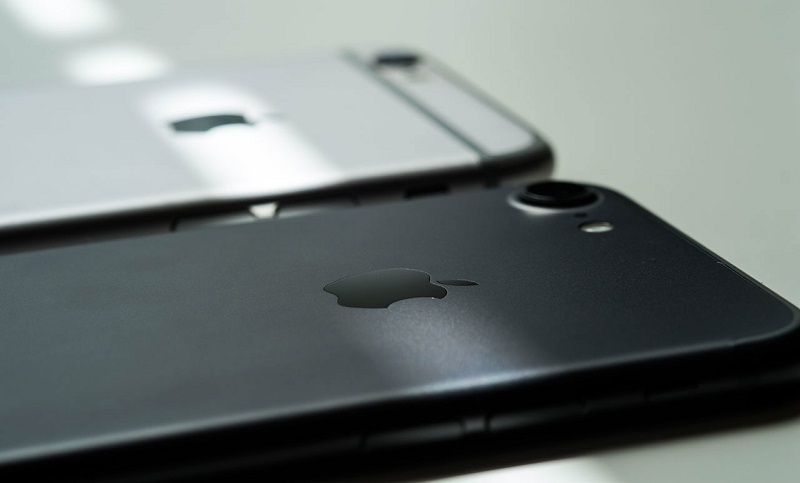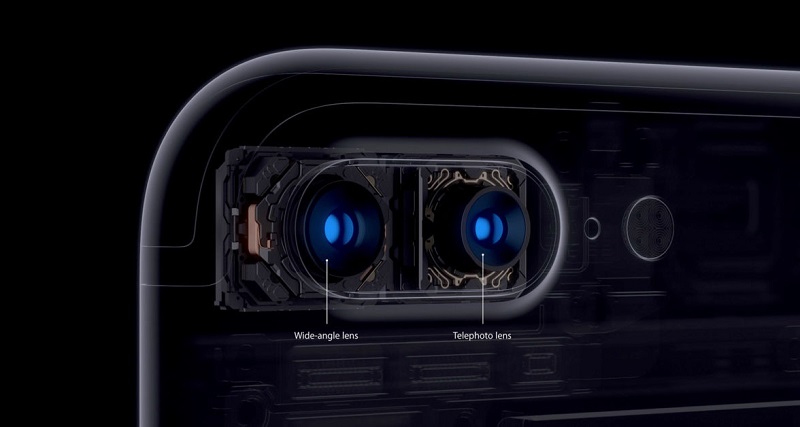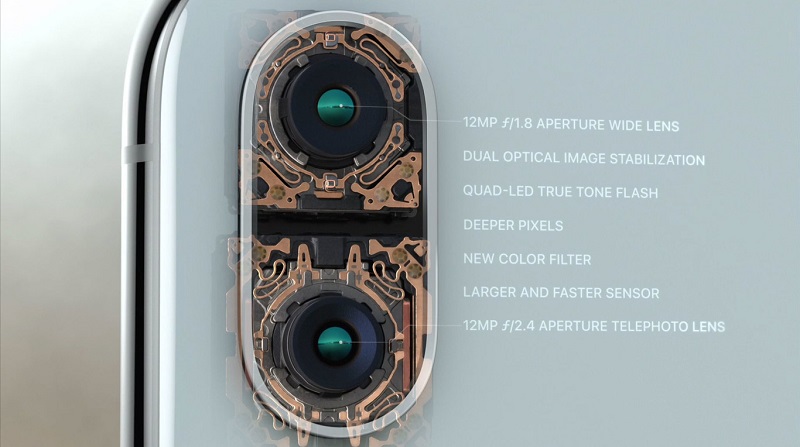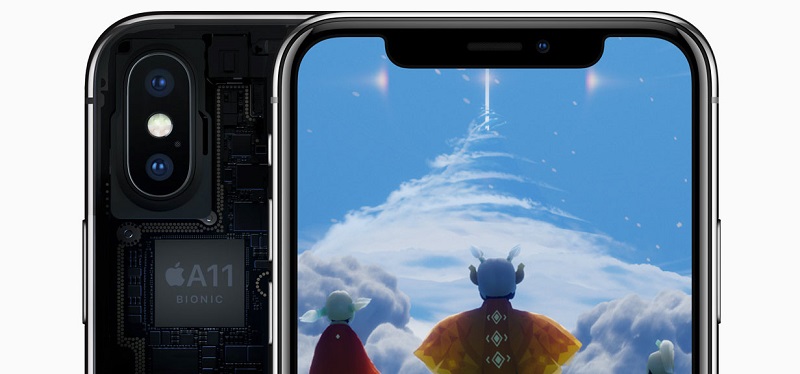What major manufacturers such as Samsung or Apple always raise excitement, but what also raises is the magnifying glass of those who look more closely at the capabilities of a new terminal, especially if we talk about new flagships. Apple captivated last year with the portrait mode of the iPhone 7 Plus, but what can we expect from the cameras of the new iPhone 8, 8 Plus and iPhone X?
The improvements have occurred to a greater or lesser extent as we talk about one or the other terminal. Despite expecting a democratization of the dual camera in Apple’s smartphones, the iPhone 8 keeps the camera unique in its back, although improving with respect to the previous as does the 8 Plus. For its part, the iPhone X changes outside and inside, with a vertical layout and a portrait mode that also reaches the front.
iPhone 8, iPhone 8 Plus and iPhone x: Technical specifications of the cameras

Image Source: Google Image
| iPHONE 8 | iPHONE 8 PLUS | iPHONE X | |
|---|---|---|---|
| Cameras | One back and one front | Two rear and one frontal | Two rear and one frontal |
| Sensors | Rear: 12 megapixels Front: 7 megapixels |
Rear: 12 + 12 megapixels Front: 7 megapixels |
Rear: 12 + 12 megapixels Front: 7 megapixels |
| Opening | Rear: f / 1.8 Front: f / 2.2 |
Rear: f / 1.8 + f / 2.8 Front: f / 2.2 |
Rear: f / 1.8 + f / 2.4 Front: f / 2.2 |
| Optical stabilizer | Yes | Yes | Yes |
| Video recording | Rear: 4K @ 24/30/60 fps, 1080p @ 30/60 fps, 720p HD @ 30 fps Front: 1080p HD |
Rear: 4K @ 24/30/60 fps, 1080p @ 30/60 fps, 720p HD @ 30 fps Front: 1080p HD |
Rear: 4K @ 24/30/60 fps, 1080p @ 30/60 fps, 720p HD @ 30 fps Front: 1080p HD |
| Optical zoom | No, 5x electronic | Yes, 10x electronic | Yes, 10x electronic |
| Portrait mode | Do not | Yes (+ portrait lit in beta) | Yes (+ portrait illuminated in beta), also in front camera |
iPhone 8 and 8 Plus: Size matters
We expected that with this evolution, since Apple has made up the “s” that we have not seen until it disappears (in appearance), the little one of the iPhones finally arrived the turn of integrating double camera. However, yesterday from California they threw a jug of cold water for those who still prefer something under 5 inches and again the pair of smartphones differs in photographic capacity, both in terms of hardware and software.
iPhone 8: Renewal by punishment
As we said, last year one of the big differences between the iPhone 7 and the iPhone 7 Plus was the combination of rear cameras, in fact it was the absence of the same in the 4.7-inch distinction itself. Again having a larger diagonal is worthy of having two lenses in Apple, and the iPhone 8 is left with a single rear camera.
What the iPhone 8 does with respect to the 7 is to integrate an improved sensor with respect to the above. It is not noticeable in the numbers (keeping 12 megapixels) as we saw from the iPhone 6s to 7, although this time the aperture f / 1.8 is maintained (and it does not expand as in the previous evolution). What is different and better then? According to Apple, the new sensor is larger and faster, able to capture 83% more light than its predecessors and is more energy efficient.
All this is driven by a new engine, the A11 Bionic chip, which in turn integrates a new image signal processor (ISP). In the absence of knowing more specific specifications, this new ISP has focused on the detection of elements of the scenes (lighting, moving items, etc.) and processes the pixels with greater precision.
With this we promise a better HDR and a faster approach, optimizing the photos in a predictive way (not shooting like the Sony Xperia, but at the level of processing and “understand” the scene). Accompanying this sensor, in addition, is the optical image stabilization (OIS) that (finally) reached 4.7 inches with the iPhone 7, all under a lens of six elements.

Image Source: Google Image
iPhone 8 Plus: Two eyes see more than one and now they also portray better
New combination of two 12 megapixel sensors : a wide angle (like the 8) and a telephoto lens, as was done with the Plus. Combined that has made Apple stand out from other bets by a double lens, although what stood out last year (even from its state in beta) was the portrait mode that we see in this new iPhone improved.
The wide-angle camera integrates, in addition to the 12-megapixel sensor, a six-element lens of f / 1.8 and the OIS. The telephoto lens on the other hand has a lens with aperture f 2.8, and its joint action is what allows optical zoom and portrait mode, as was the case with the iPhone 7 Plus.
You may also like to read: iOS 11: Siri learns to translate and the Control Center is redesigned in the new version of the operating system
But what’s new in portrait mode? Here comes into play the computational part, as we saw in the 7 Plus, although this time we have new SoC and new ISP (the A11 Bionic), which evolve this bokeh effect providing the possibility for the user to choose a posteriori the applied lighting.
For this purpose, the facial detection and the creation of the depth map, together with the information provided by the two sensors, as well as artificial intelligence to make a more precise examination of the face and its illumination, is again carried out. With this, what the user gets is an added menu of options in terms of the light that is applied to his face, going from natural light to study light, outline, scenario and mono (black and white) stage.
- Natural light: The standard depth of field effect, with the subject in focus and the background out of focus.
- Studio light: More shine on the face.
- Contour light: More dramatic highlights and shadows.
- Stage light: The subject receives a contribution of light as a stage focus, remaining on a dark background.
- Monkey stage light: The same as the previous one, but in monochromatic.
What they clarify in this point is that by how you get everything, that combination of information and the use of machine learning, it is an application of a real-time analysis, unlike that of the filters that can be done a posterior. And as happened last year in the presentation of the original portrait mode, at the moment this “illuminated portrait mode” is also in beta phase.
But one of the important novelties is that the cameras of the iPhone 8 Plus are prepared for the augmented reality, with a gyroscope and an accelerometer more precise than the previous ones, and the necessary also at the level of software for the calibration for this use. Also here is the new SoC, with a CPU for recording the movement and scenes, and the help of the new GPU rendering realistic graphics and the new ISP (providing lighting in real time).

Image Source: Google Image
Video and front camera: In the same league
Perhaps the front camera of these smartphones was one of the elements with less prominence of yesterday’s presentation. In fact, the lack of clarification or confirmation makes us think that in this case sensor is repeated with respect to the iPhone 7, having FaceTime HD 7 megapixel cameras with aperture f / 2.2.
Neither does the flash change, resorting again to the action of the screen to provide lighting if the user so wishes. This apparent absence of evolutionin the subjective camera is not something negative per se either, we already saw that the iPhone did not look bad before the competition in front camera issue (although we gave the gold to Pixel XL).
Other common features in both phones are the compression in HEIF format, which allows photographs to occupy less volume, the True Tone rear flash of four slow synchro LEDs (combines the short strobe pulse with a slow shot, usual in low light ) and video improvements, which we will now see in detail.
With the evolution of the rear camera (s) there is a slight improvement in video capture. The 4K we already saw in the cameras of the iPhones, also the possibility of capturing snapshots of 8 megapixels while recording with this quality and the HEVC compression (so that the videos occupy less), but now they are able to also capture up to 60 fps (the 7 do it only at 30 fps), and have also gone further with slow motion with the capture in 1080p up to 240 fps.
This is possible thanks to a new coder designed by the house that is capable of recording videos at more frames per second and that realizes analysis of the image and movement in real time. An analysis of 2 million fragments of the image per second that allows that small anticipation that we mentioned in the process, identifying in each one of them if it is capturing sky, soil, skin, etc.
iPhone X: Because all cameras deserve the most
As we have seen in the introduction, the special edition of the iPhone (which is finally pronounced “iPhone 10” and not “iPhone X”) also combines two 12 megapixel sensors larger than their predecessors. The apertures in this case vary slightly with respect to the iPhone 8 Plus, being f / 1.8 for the wide angle and f / 2.4 for the telephoto lens, and as in the case of the 8 there is a new color filter, pixels with greater depth and a faster approach than in previous generation smartphones.
The illuminated portrait mode will also be in this terminal, as well as the quadruple flash that we see from the iPhone 7 and the improvements in video that we have commented thanks to the new encoder. But yes, the optical stabilization in this case is present in both lenses.
Of course, in this case they were not going to leave the augmented reality apart and these two cameras are also prepared for this use, of which we already saw many creative and curious examples from the developers who have been working with him for months. Each camera is calibrated for AR, also with new accelerometer and gyroscope and the contributions of the processors, but in this case it is also a feature of the front camera.

Image Source: Google Image
Front camera: Now it is protagonist
If before we saw some front cameras with a seemingly absent evolution, in the case the iPhone X the thing changes and quite a lot. We see again a 7 megapixel sensor with maximum aperture f / 2.2, but in this case it includes the popular portrait mode as well.
Although beyond photography the protagonism took it to be the cornerstone of security in the iPhone X, without TouchID, by the unlocking by facial recognition, a function that is achieved thanks to the entourage of sensors that guard this front camera renamed as TrueDepth. And Javier Lacort spoke about it in depth yesterday, with everything related to Face ID that is what this unlock is called.
What does this TrueDepth contribute in relation to selfies ? In addition to the portrait mode for selfies, Apple promises a capture with a more accurate exposure control and a high range of colors, as well as the automatic stabilization (electronics) that we also see on the front of the iPhone 8.
A lot to check and really want to do it
With everything we saw yesterday, and how strong the high-end mobile phones are in terms of cameras, we’re really looking forward to seeing what all this new army of processors, sensors and lenses that make up the cameras are capable of. the new iPhones. Especially the most vitaminized, the iPhone X, which has the challenge of having its front camera take the best portraits along with facing the TouchID in terms of comfort, ease and effectiveness of the identification of the user.
We will see what are the new terminals of Apple in practice in terms of photography, especially seeing how is evolution beyond what we were told yesterday and how they are with respect to everything that have been presented by LG, Huawei and others, with their double cameras and effects (already also baptized as) portrait.


